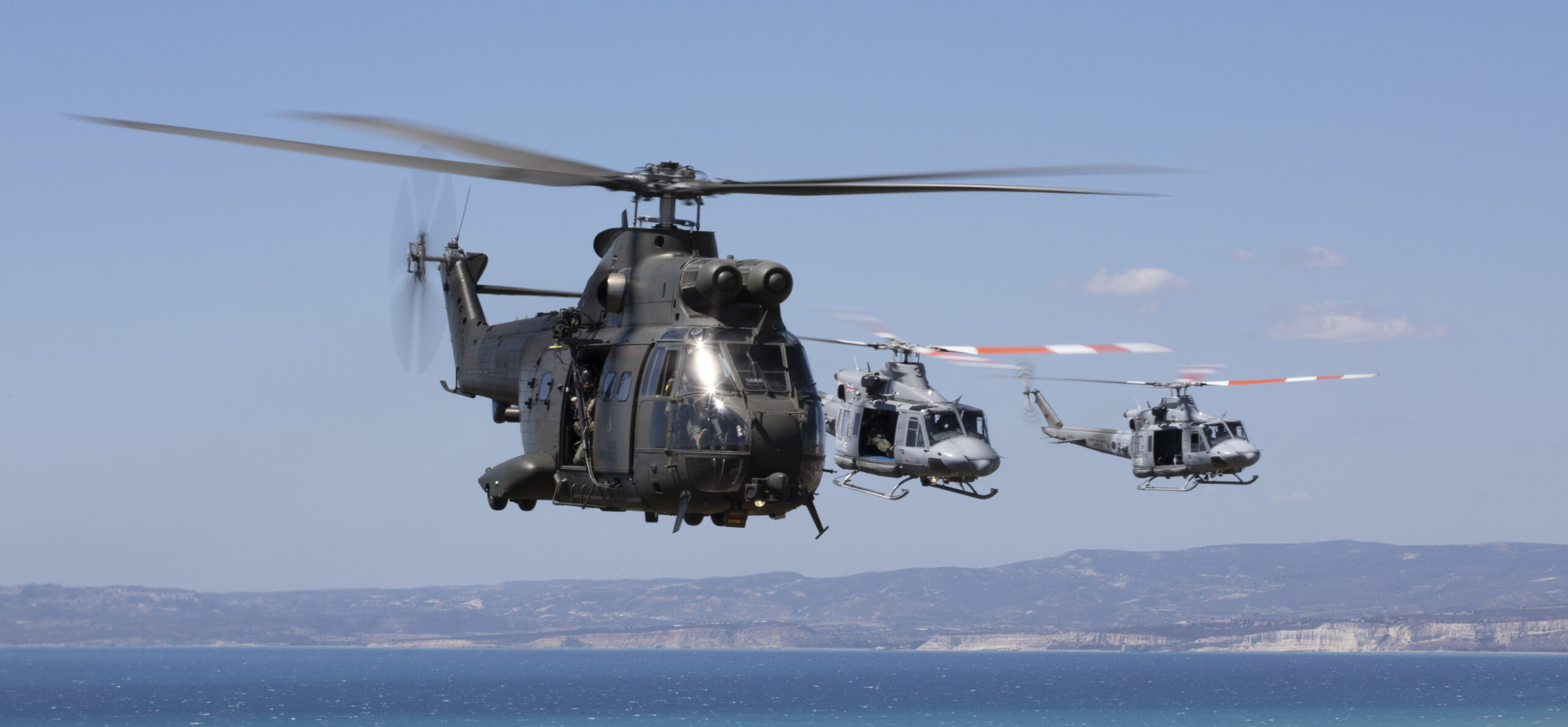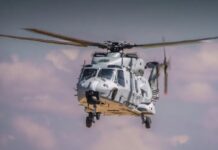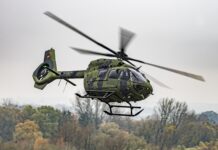As predicted by ESD on 22 August 2024, both Airbus Helicopters and Lockheed Martin UK have pulled out of the UK’s New Medium Helicopter (NMH) programme, with both companies confirming their withdrawal in advance of the bid deadline of midnight on 30 August. The two companies had been offering the H175M and UH-60M Black Hawk respectively for what has effectively now become a replacement programme for the Royal Air Force’s (RAF’s) fleet of Puma HC2 helicopters.
The NMH programme is thus left with Leonardo Helicopters UK, offering the AW149, as the sole remaining bidder, although it is unclear whether the UK Ministry of Defence (MoD) will proceed on that basis, while the programme may yet be cancelled anyway by the UK’s ongoing Strategic Defence Review, due to be published in the first half of 2025.
In an announcement issued on 30 August Airbus stated, “Together with our partners we have concluded that we are unable to formulate a responsible bid that would in parallel satisfy the customer’s requirements and provide adequate long-term returns to the business while implying a reasonable prospect of winning.
“We believe that the outcome of this procurement as it stands would not be able to deliver on current defence-industrial strategy objectives, particularly its ambition for long-term new jobs, opportunities for the UK supply chain and sovereign capability.
“We continue to believe the H175M is the right helicopter for the UK, providing the best combination of cost effectiveness, capability and value to UK society, but have concluded that continued pursuit of the NMH opportunity cannot be justified,” Airbus stated, adding that “Reluctantly, we have taken the decision to withdraw from the competition.”
Lockheed Martin UK stated the same day, “We believe that Black Hawk remains the best solution both for the UK armed forces and UK industry and continue to collaborate with UK MoD to support its refresh of the wider UK Rotary Wing Strategy, but have elected not to submit a response to the New Medium Helicopter ITN [invitation to negotiate] as we could not meet its minimum requirements in today’s market conditions.”
Conversely, Leonardo Helicopters UK released a 30 August statement from its managing director, Adam Clarke, which read, “Further to the statement from the Minister for Defence Procurement that tender returns are due back on 30 August, Leonardo has submitted a bid that is fully compliant with the UK MoD’s requirements on budget, number of platforms and timeline.
“Because we have an established UK onshore helicopter design and manufacturing capability and a related domestic supply chain, we have been able to meet the MoD’s requirements, including for social value and UK industrial contribution. We are confident in our offering as the only company in the competition with the skills and infrastructure onshore to provide a ‘Made in Britain’ helicopter to the UK armed forces.”
The details of the Leonardo bid remain confidential, although it understood that under the the rebaselined NMH programme the UK MoD is seeking a minimum of 23 helicopters.
A long, drawn-out process
When the NMH programme was originally announced by the UK MoD in March 2021, the ministry stated that it intended to procure up to 44 NMHs in a contract worth GBP 0.9-1.2 billion (EUR 1-1.4 billion). NMH at the time covered four distinct rotary-wing requirements. As well as replacing the fleet of 23 RAF Puma HC2s operated by No 33 and No 230 squadrons out of RAF Benson in Oxfordshire from 2025, the programme was also intended to replace five Bell 212s serving with the Army Air Corps’ (AAC’s) No 667 Squadron in Brunei, three Griffin HAR2s operated by the RAF’s No 84 Squadron out of RAF Akrotiri on Cyprus (tasked with search and rescue), and an original six special-forces-roled AS365 N3 Dauphin IIs operated by the AAC’s No 658 Squadron from the Special Air Service (SAS) barracks at Credenhill in Herefordshire (of which five are believed to remain).
Then, on 18 April 2024, the UK MoD announced it had awarded Airbus a GBP 122 million (EUR 142.6 million) contract for six Airbus H145s – smaller helicopters than the NMH solution was intended to be – to provide aviation support for UK troops in Brunei and Cyprus. This procurement means that the original premise of the NMH programme – to replace four distinct rotary-wing requirements with a single type, with all the logistical and support advantages that would bring – is already not happening.
ESD understands that the MoD never stipulated precisely how many NMHs would be required; instead, it was left to the bidders to determine how many of their aircraft would adequately meet the requirement, with bids offering higher aircraft numbers being favoured under the scoring system being used to determine the winner.
A budget versus numbers issue
As the NMH programme went through its machinations, it appeared increasingly apparent that the MoD’s original intent – to procure “up to 44 helicopters” for a budget of around GBP 1 billion – was not realistic.
Extrapolating unit costs for aircraft purchases is notoriously difficult; higher-volume purchases can generally reduce overall unit costs, while packaged sales invariably include additional items such as spare powerplants, mission systems and in-service support costs.
However, looking at Sweden’s 10 July 2024 Foreign Military Sales (FMS) order for the UH-60M Black Hawk, it can be seen that Sweden secured the purchase of 12 UH-60Ms for USD 900 million (EUR 825 million) in a package that included six spare T700-GE-701D engines; numerous associated avionics, communications and mission systems; plus a support package.
On 12 July 2024 it was announced that Croatia had secured an FMS purchase of eight UH-60Ms for an estimated USD 500 million (EUR 458 million) in a package that included three spare engines along with various mission systems, spares and support.
Even though these figures cannot be directly applied to the NMH case, it appears clear that not enough Black Hawks could be purchased for even the minimal rebaselined NMH requirement of 23 helicopters.
The unit prices for the H175M and AW149 will, of course, be different – both are lighter and smaller than a Black Hawk – but Airbus has clearly determined that the numbers don’t add up, while it will be interesting to see how many aircraft Leonardo has included in its bid.
An uncertain path ahead
If the NMH programme ultimately becomes undone, either by the MoD declining to proceed with a single bidder or the requirement being cancelled, it would appear that the RAF Puma HC2s and AAC AS365 N3 Dauphin IIs will have to soldier on.
While the RAF’s Pumas have been in service for more than 50 years, 24 of an original fleet of 53 aircraft underwent a mid-life upgrade, the contract for which was signed in September 2009, with the RAF returning this modernised fleet of Puma HC2s to operational service in 2015.
Published UK MoD data states that the RAF had a total of 18 Pumas in its inventory in 2023, of which 13 were in active service. The same data shows that only a couple of Dauphins have been in active service for the last several years.
Airbus stated at the end of its 30 August withdrawal announcement, “We look forward to continuing to support the Airbus Puma helicopter in service for as long as required.”













